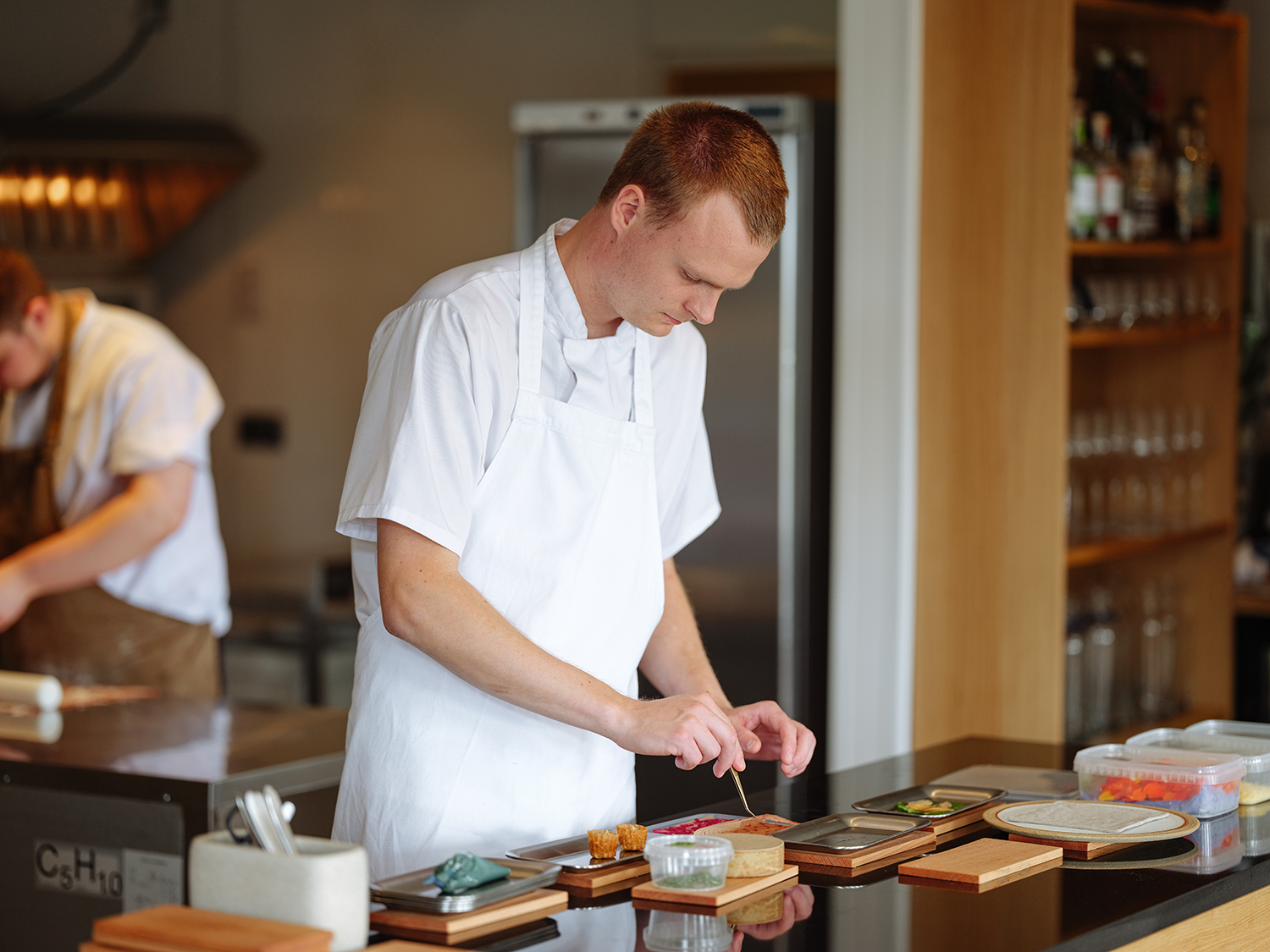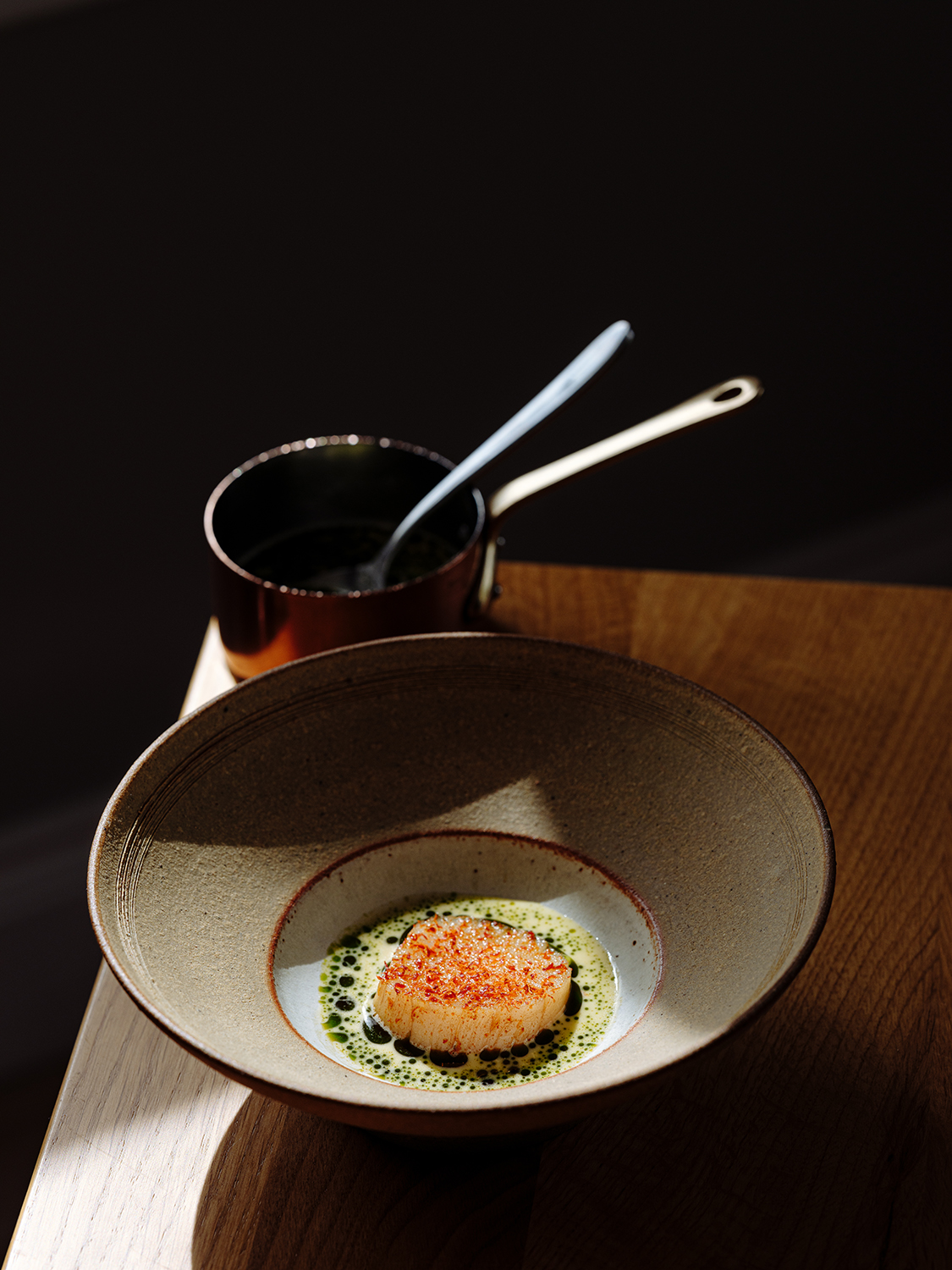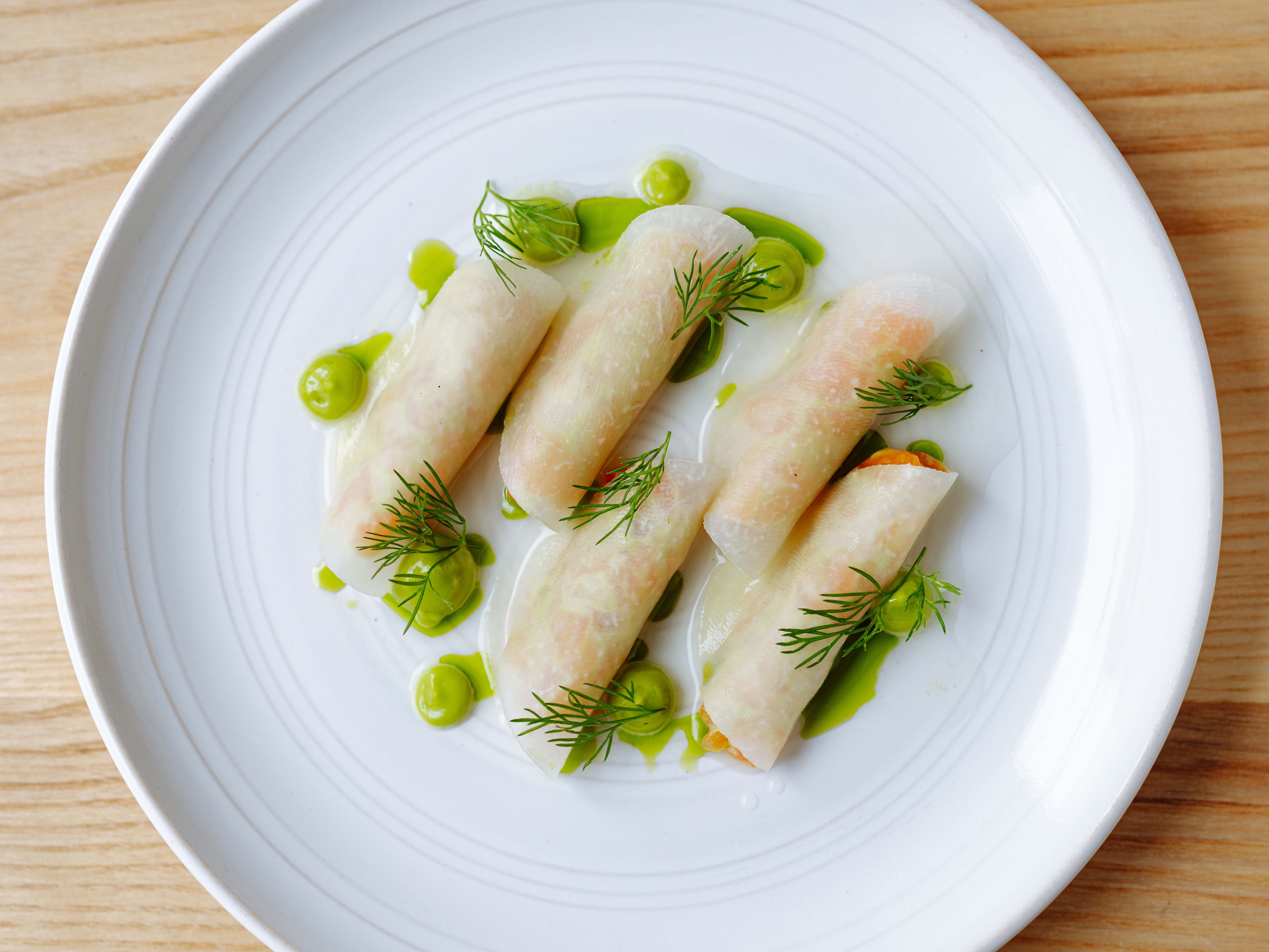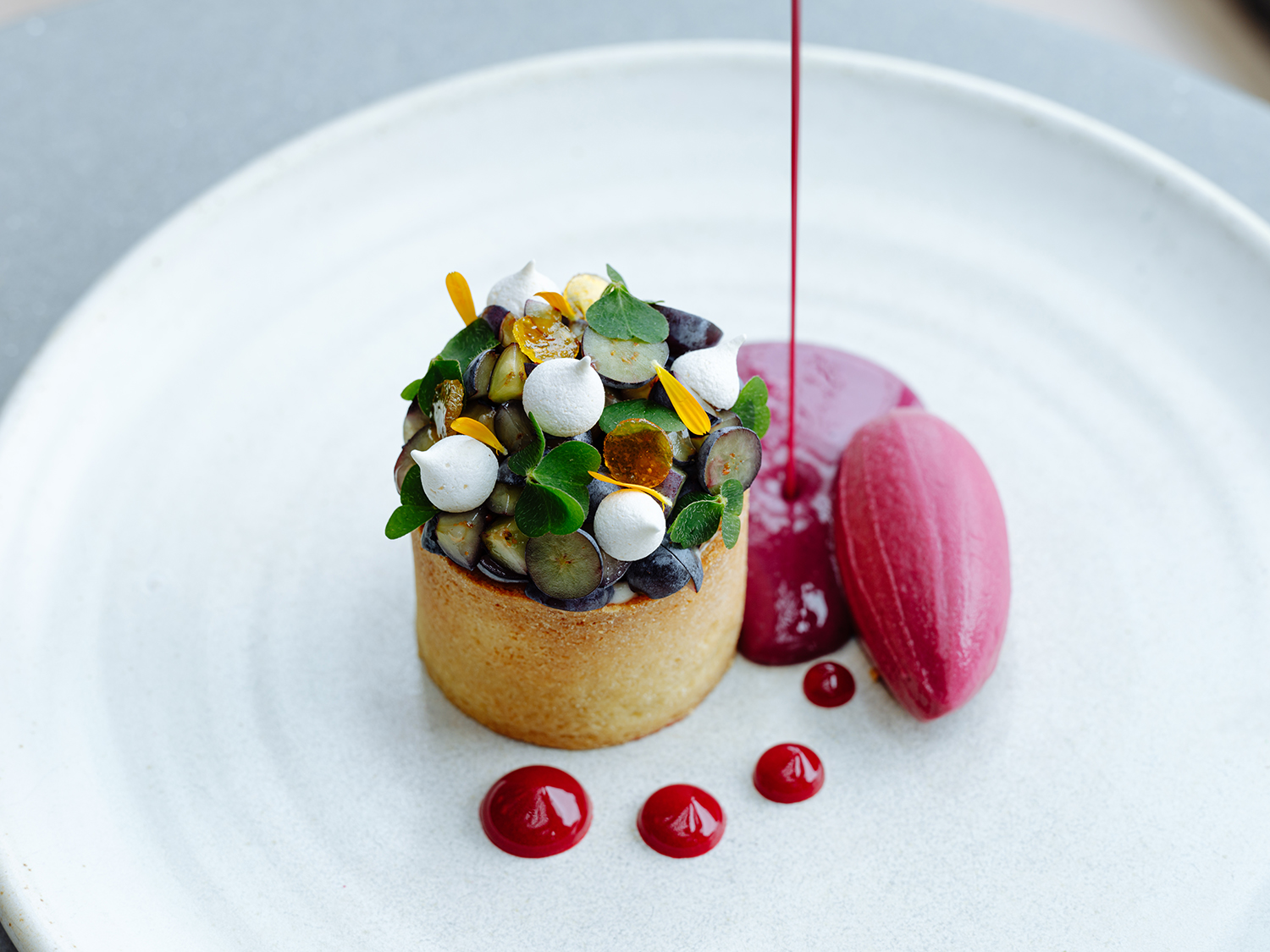When I started out in food photography, I had no idea how much of my work would be focused on restaurants and chefs. I imagined I would probably work from a studio with everything I need in one place, but over the last six years, I’ve worked all over the country, particularly London. I’m based near Newcastle in the north-east of England, so that means I travel a lot!
Additionally, my kit has developed substantially over the last decade, so any way I can refine my set-up to make the commuting easier is more than welcome. The FUJIFILM GFX system is the perfect solution, offering spectacular quality, yet retaining that all-important portability.
On most restaurant shoots, I photograph a mixture of food, drink, portraits and interiors, so I start by looking for the best available light and build my set around that spot. If the light is poor, I’ll put together my ‘portable studio’ to recreate window light. This includes a monolight, softbox, deep umbrella, large pop-up diffuser, reflector, foam board (black and white), clamps and a good, tall tripod. Occasionally, I’ll get the opportunity to photograph a restaurant I know has a good amount of daylight. On these shoots, I travel as light as possible, taking only my camera kit, tripod and reflector.
I used the GFX 50S and a selection of lenses to photograph a number of restaurants in Scotland and north-east England over the last few months, the results of which you can see here.
Cook House is a restaurant in Newcastle Upon Tyne run by Anna Hedworth. The ingredients she uses are seasonal, local and the dishes are honest and delicious. The restaurant benefits from nice window light and she has a real skill at creating the most Instagrammable plates, so I photographed these dishes overhead using the GF32-64mmF4 R LM WR.
Hjem is a fine-dining restaurant in Northumberland that opened earlier this year. Swedish chef Alex Nietosvuori creates dishes that are delicate and precise and, as such, benefit from being photographed close up. I captured these dishes using the GF110mmF2 R LM WR and GF120mmF4 R LM OIS WR Macro, both with macro extension tubes.
In Scotland, I photographed Fhior and The Kitchin, which are both in Edinburgh. I shot a selection of dishes, plus a number of portraits using the GF110mmF2 and GF63mmF2.8 lenses.
It’s been a real pleasure to use the GFX 50S. It’s so great to use a camera that is suited to shooting with both available light and strobes. For such a large, high-resolution sensor, the high ISO performance in low light is very impressive. Even when the noise does start to appear, it’s an attractive grain that doesn’t distract.
When it comes to handling, the controls are well placed and it’s extremely easy to find your way around in the dark. The screen is such a great addition, too, meaning I can compose a shot with the camera high on a tripod without the need to tether to a computer.
Many food photographers use two-camera systems – a full-frame for editorial style work and usually a medium format for commercial work. The GFX 50S appeals to me, because it can handle both. Also, having Fujifilm’s fantastic Film Simulation modes built in to Capture One and Lightroom really speeds up post-production, and I find I’m having to do much less to the get the look I like.




















































